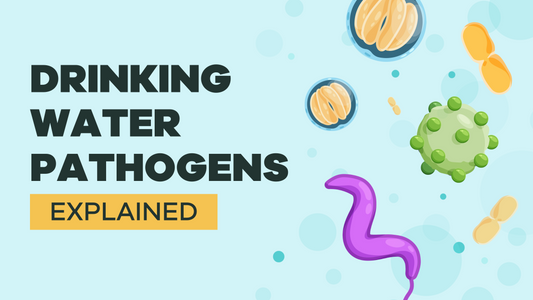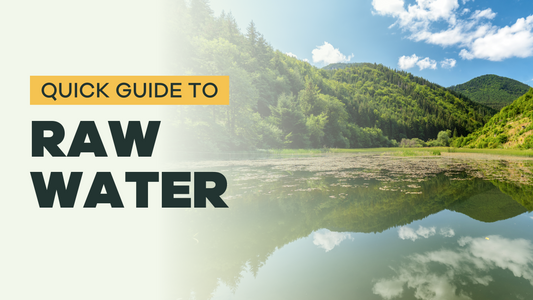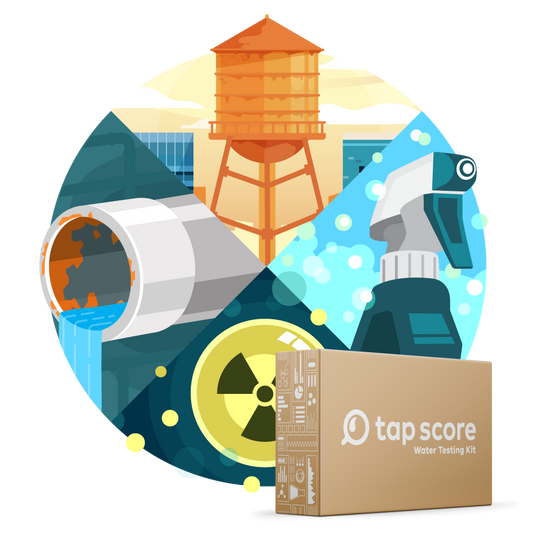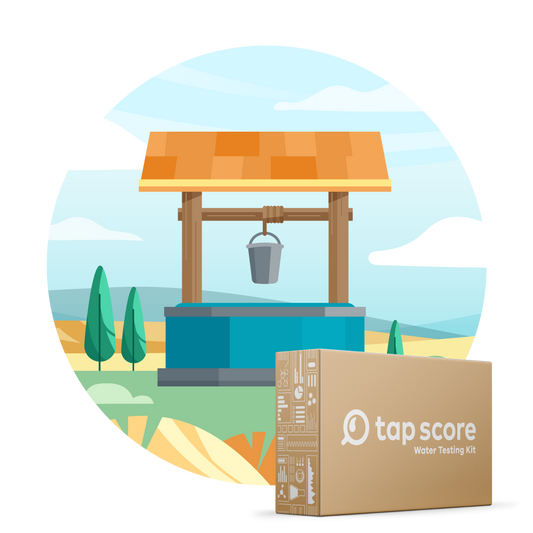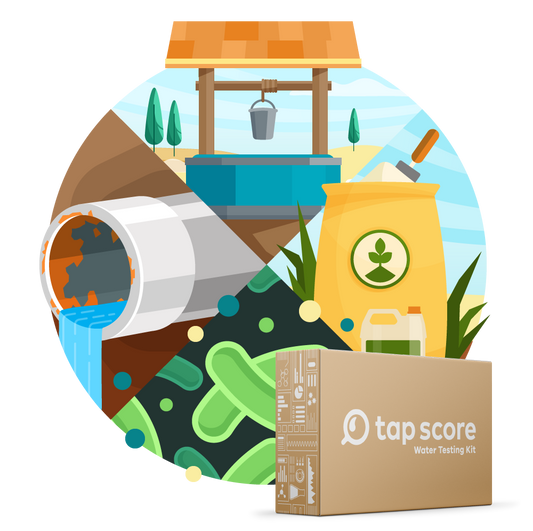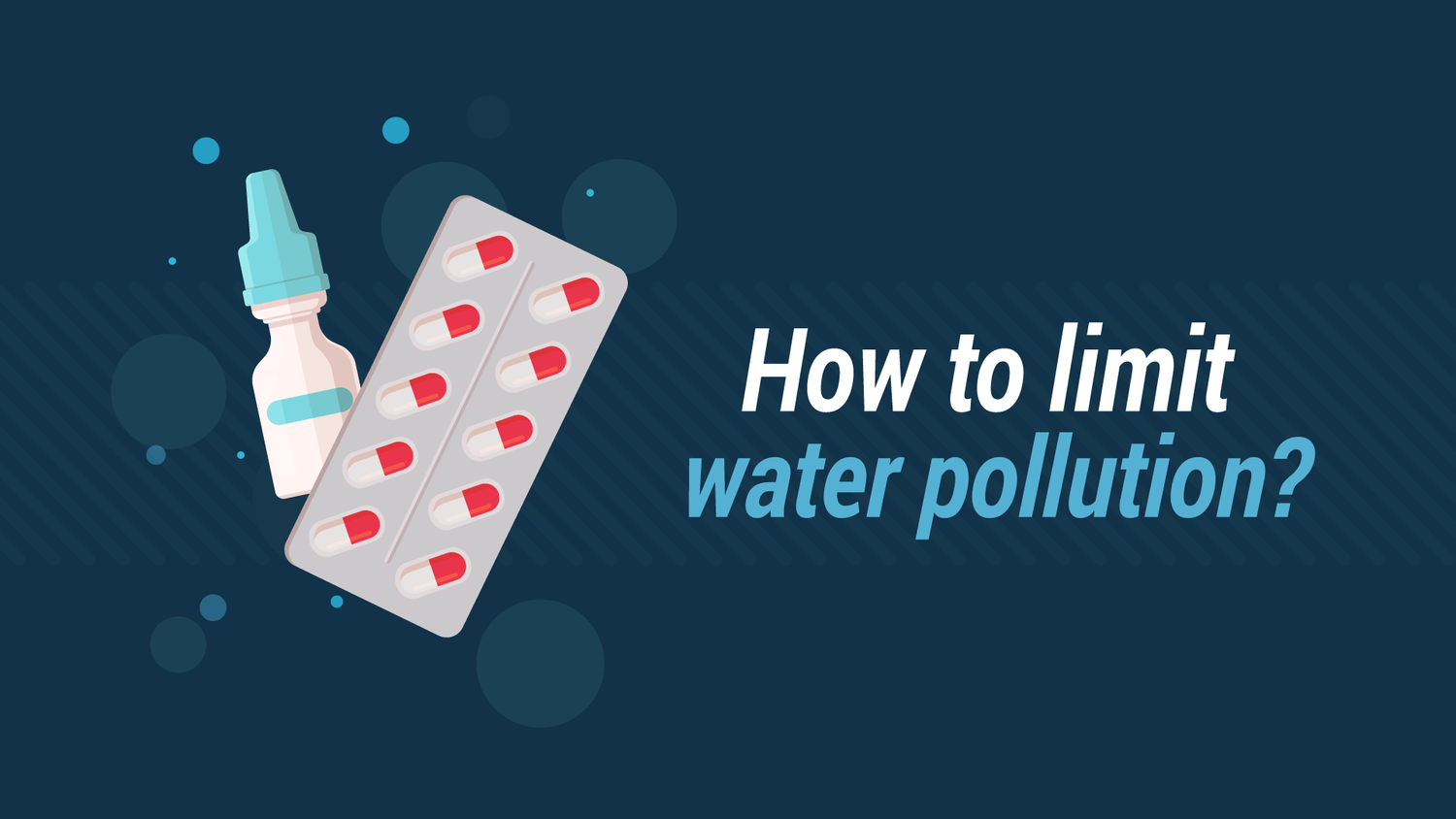
A Quick Guide on How You Can Limit Water Pollution
Our blog is written by real experts— not AI. Each guide is carefully reviewed and updated based on the latest research. Plus, with no affiliate links, you can count on unbiased insights you can trust.
Chemicals–we consume them, absorb them, inhale them. They are everywhere. To put things in perspective, a study reported that women put an average of 168 chemicals on their bodies everyday! This staggering number only refers to personal care products (i.e. shampoo, lotion, makeup etc.). Our actual chemical use is substantially higher if you factor in all of the cleaning products, pesticides, and fertilizer people use. While many of these chemicals are benign, some may have more significant impacts–especially on our drinking water.
How do these everyday products impact our water? First, they can either enter our surface water, which in turn ends up in the ocean or our drinking water treatment plants. Or, they can seep into shallow ground wells. Second, once they’ve entered the water supply, they risk polluting our drinking water, raising concern for environmental and public health.
Fortunately, we can and should take actions in our everyday lives to combat this cycle of water pollution. We’ve put together 6 easy ways for you to help reduce drinking water pollution.
- Stay Informed About Personal Care Products
While a handful of chemicals found in personal care products are regulated, most are not. One of the biggest culprits of water pollution takes shape in a tiny form–microbeads, or synthetic plastic particles.
While all the rage, microbeads are a water pollutant. Microbead particles are too tiny to be removed in water treatment facilities. Microbeads also act like sponges. They attract and absorb potentially dangerous chemicals and carry them through the water cycle.
Many products are no longer using microbeads, but you can ensure you’re not using these products by checking labels for polypropylene and polyethylene (their common ingredients).
- Proper Pharmaceutical Disposal
Have you ever heard that you should flush your old medicine down the toilet so that no one can use or get poisoned by it?
Well, you heard bad advice! Flushed pharmaceuticals can and do end up in the drinking water supply. This leads to a continual, low-level exposure of a wide variety of medications that isn’t good for anyone.
Some ways to reduce your pharmaceutical footprint include:
- Limit bulk medication purchases
- Take advantage of drug take-back programs
- Be careful about how you throw medications into the trash.
- Runoff: Lawn & Car
Runoff (water from irrigation or rain storms) can pick up all the unwanted toxic elements on your lawn or driveway. This water runs into surface waters, directly harming wildlife, putting swimmers at high risk, and eventually entering the drinking water system. Additionally, if contaminated runoff water seeps into your groundwater and you have private well, your home’s drinking water may be negatively impacted. There are many ways that you can prevent contributing to the runoff problem:
- Improve your lawn care practices
- Ways to reduce your impact when washing your car
- Motor oil, detergent, and other contaminants can make their way into waterways when you spray your car down–particularly because driveways and sidewalks are often impermeable. The best way to combat this problem:
- Take your care to a professional car wash, since they use filters to trap pollutants in the runoff
- Runoff: Pet Waste Pollutes
The cardinal rule: always clean up after your pet. Undisposed pet waste drains into local water sources (like your lawn fertilizer or motor oil), which will then deposit ammonia and other elements into the water supply. The simple fix? Pick up after your pup!
- Safer Dinner Cleanup
Sure, you may be in a rush to clean up after dinner and get settled in for the night, but be mindful of how you clean your pots and pans. Pouring grease and cooking oils down your pipes can cause sewage backup that can overflow and leach into groundwater. If you’ve got a private well–this can lead to drinking water contamination. The quick fix here? Dispose of grease and cooking oils in your trash.
- Maintain Your Septic System
If you’re one of the approximately 20% of all Americans that use a septic system, you’ll want to ensure it’s working properly. After all, an improperly functioning septic system can pollute local groundwater. This is because a backed-up septic system can leak chemicals and pathogens into soil and groundwater–which can adversely impact the quality of your drinking water (most directly if you’re on a private well).
The best ways to reduce your risk of septic system issues are:
- Schedule regular system maintenance every three to four years.
- Investigate any wet spots or slow drainage areas on your lawn
- Be alert to any gurgling sounds from drains within your house.
Any of these occurrences may be symptoms of a malfunctioning septic system.
The list above features just a few tips on how to minimize your contribution to drinking water pollution. Still, there’s always more you can do to protect yourself and your family.
SimpleLab’s Tap Score home water test is a comprehensive home water testing solution that checks your drinking water for more than 100 contaminants. The test is simple to use, and your Tap Score results are easy-to-read and in plain English. Our results include details on the health implications for you and your family and are always updated with the most recent research.
Article Sources
▾http://abcnews.go.com/Health/women-put-average-168-chemicals-bodies-day-consumer/story?id=30615324
https://www.fda.gov/cosmetics/guidanceregulation/lawsregulations/ucm127406.htm
https://fas.org/sgp/crs/misc/IN10319.pdf
http://www.beatthemicrobead.org/en/
https://www.scientificamerican.com/article/pharmaceuticals-in-the-water/
https://www.health.harvard.edu/newsletter_article/drugs-in-the-water
https://cfpub.epa.gov/npstbx/files/marc_lawnchemicals.pdf
http://www.theatlantic.com/technology/archive/2015/09/americas-sewage-crisis-public-health/405541/



